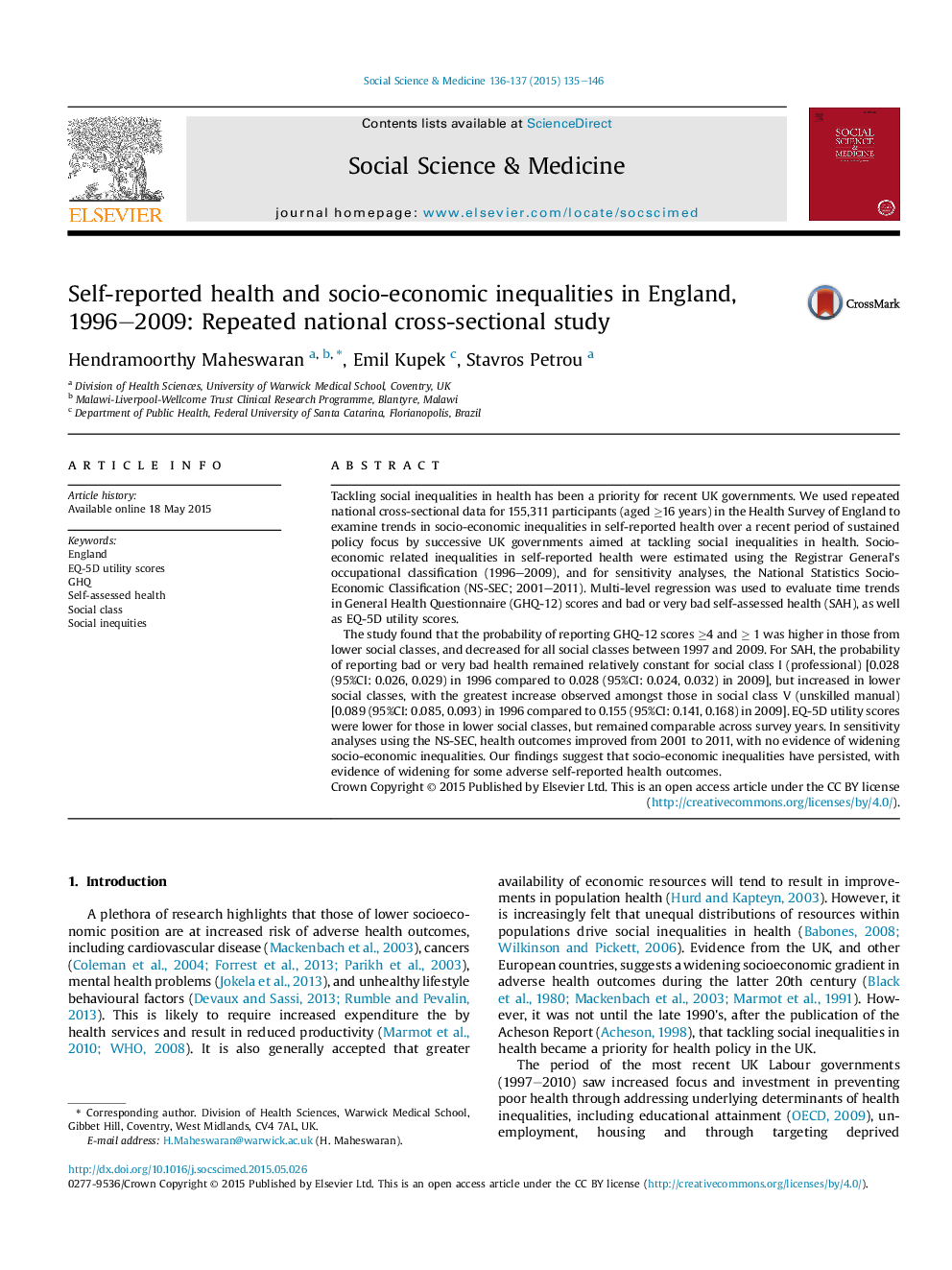| Article ID | Journal | Published Year | Pages | File Type |
|---|---|---|---|---|
| 7332299 | Social Science & Medicine | 2015 | 12 Pages |
Abstract
The study found that the probability of reporting GHQ-12 scores â¥4 and â¥Â 1 was higher in those from lower social classes, and decreased for all social classes between 1997 and 2009. For SAH, the probability of reporting bad or very bad health remained relatively constant for social class I (professional) [0.028 (95%CI: 0.026, 0.029) in 1996 compared to 0.028 (95%CI: 0.024, 0.032) in 2009], but increased in lower social classes, with the greatest increase observed amongst those in social class V (unskilled manual) [0.089 (95%CI: 0.085, 0.093) in 1996 compared to 0.155 (95%CI: 0.141, 0.168) in 2009]. EQ-5D utility scores were lower for those in lower social classes, but remained comparable across survey years. In sensitivity analyses using the NS-SEC, health outcomes improved from 2001 to 2011, with no evidence of widening socio-economic inequalities. Our findings suggest that socio-economic inequalities have persisted, with evidence of widening for some adverse self-reported health outcomes.
Related Topics
Health Sciences
Medicine and Dentistry
Public Health and Health Policy
Authors
Hendramoorthy Maheswaran, Emil Kupek, Stavros Petrou,
